What data recovery tools to buy if you want to start a data recovery business?
Free video data recovery training on how to recover lost data from different hard drives?
Where to buy head and platter replacement tools at good prices?
Data recover case studies step by step guide
I want to attend professional data recovery training courses
The Extended FAT File System (exFAT) is a new and not yet widely used file system. Some people are nicknaming it as FAT64. It has been out for a few years and it will gain acceptance and momentum with the release of storage devices that will support the new SDXC standard.
exFAT is designed for removable media where NTFS is not. As outlined in my paper, NTFS is a lazy write format, which means that I/O buffers are cached in memory and buffers are not always flushed immediately to the device. If the media is formated as NTFS (there are ways to trick the OS to think it is not removable) and the media is abruptly ejected, data loss can occur.
Although this should be less of an issue with FAT file systems, keep in mind that FAT 12/16/32 file systems have TWO (2) FAT tables, and they flip-flop as they are updated. exFAT, version 1.00 does not have this feature. exFAT version 1.00 has ONE (1) FAT table, and if you blow the table, you can lose a lot. In a later version of exFAT a feature called TexFAT (Transactional exFAT) will be provided with TWO (2) FAT tables – and TWO (2) Allocation Bitmaps (they work in pairs) and they will flip-flop. The point here is that the legacy FAT for now has redundant tables. However, keep in mind that if the free space is large, then the FAT table itself in exFAT may not even get changed, but the Allocation Bitmap does have to change, and for now there is only one.
But, REGARDLESS of the formatted file system, it is best practice not to abruptly dismount the file system by pulling the media without proper “safely remove hardware” dismounts.
So, another issue is Windows 7 only giving the option of exFAT to format USB sticks greater than 32GB in size. For example, a 128GB USB stick, or even some USB removable drives that are in 100?s of GB or even 1 or 2 T B, FAT32 is not provided as a format option. Any Windows system, even Windows 2000, will not format a device in FAT32 if that device is larger than 32GB. This is a restriction, and if the drive is larger than 32GB and formated as FAT32, some Windows utilities won’t work correctly. But, if you just use the drive for file storage, it may be fine. So, if Windows won’t format a drive larger than 32GB in FAT32, how do you get the drive formatted? Well, some of those drives may come out of the box preformatted as FAT32, you can use Linux to format the drive, or you may find a utility program that will do the format. You can download a Live CD of a Linux system and do the format. Windows will recognize a FAT32 file system that is larger than 32GB, it just won’t let you create one.
So, the next common question is what do you do when you have a exFAT file system (any size) and you want to convert to FAT32? What is important to know is that unlike FAT32 to NTFS, there is no “convert” command to convert exFAT to FAT32 or vise versa. This means that all files (that you want to keep) have to be movied/copied to another intermediate drive first, then the device formatted, and then move/copy the files back. If the drive is a TB or larger, this is going to take time. But there could be a glitch going from exFAT to FAT32. If you created a file mon the exFAT file system that is larger than 4GB in size for a single file, it won’t copy to a FAT16 or FAT32 file system because those file systems don’t support large files over 4GB. Either the file has to be chopped up, or convert to NTFS.
Data recovery Salon welcomes your comments and share with us your ideas, suggestions and experience. Data recovery salon is dedicated in sharing the most useful data recovery information with our users and only if you are good at data recovery or related knowledge, please kindly drop us an email and we will publish your article here. We need to make data recovery Salon to be the most professional and free data recovery E-book online.

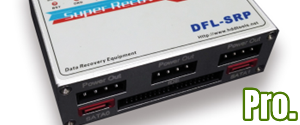
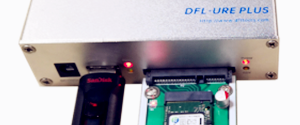
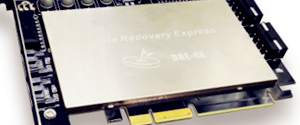

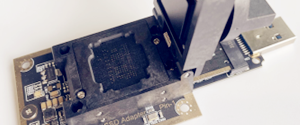
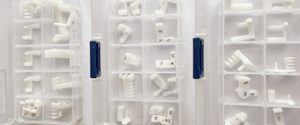
4 Comments
exFAT was first released with CE 6.0 but will finally hit the mainstream with Vista SP1. exFAT has several advantages over FAT32:
-File size limit is now 16 exabytes.
– Format size limits and files per directory limits are practically eliminated.
– Like HPFS, exFAT uses free space bitmaps to reduce fragmentation and free space allocation/detection issues.
– Like HTFS, permission systems should be able to be attached through an access control list (ACL). It is unclear if or when Vista will include this feature, however.
In the past most power-users of Microsoft systems have opted to format/convert to a NTFS file system instead.
FAT32 is the file system with which most windows users are most familiar. Windows first supported FAT32 with Windows 95 OSR2 and has increased support for it through XP.
FAT32 has multiple issues that modern systems can experience:
– By default windows systems can only format a drive up to 32 GB. Additional software works around this issue. When formatted at these bigger sizes, FAT32 becomes increasingly inefficient.
– The maximum file size on a FAT32 formatted drive is around 4 GB. With DVD and high resolution DVD formats now available, this limit is commonly noticed.
– Dealing with fragmentation and free disk space calculations can become painfully resource intensive in large FAT32 systems.
– A FAT32 directory can have 65,536 directory entries. Each file or subdirectory can take up multiple entries; therefore, FAT32 directories are limited with how many files it can hold.
Interestingly enough, exFAT is not used currently for formatting hard drives. It is being recommended in Flash memory storage and other external devices only. This is why it is currently not considered a huge competitor to NTFS on hard drives.
However, exFAT should be a true competitor to NTFS on systems with limited processing power and memory. NTFS on flash memory has been known to be inefficient for quite some time. exFAT’s smaller footprint/overhead makes it ideal for this purpose. Of course, only if your definition of “ideal” allows software to be proprietary and not open source.
Vista will happily read FAT, exFAT, and NTFS from flash. ReadyBoost may not work with exFAT formatted flash drives, however.
In conclusion, basically, FAT is a simple system. This limits FAT system by losing efficiency at large sizes, but allows it to run with less resources. The complexity of NTFS increases features but requires more memory and processing power.
Advantages
The advantages over previous File Allocation Table (FAT) file system versions include:
* Scalability to large disk sizes: 64 ZiB theoretical max, 512 TiB recommended max, raised from the 2 TiB limit of FAT32 partitions. Note that the built-in Windows XP format utility limits new FAT32 partitions to 32 GiB.
* Cluster size up to 32 MiB
* File size limit of 64 ZiB (512 TiB recommended max), raised from close to 4 GiB in FAT32
* Free space allocation and delete performance improved due to introduction of a free space bitmap
* Support for up to 2,796,202 files per directory, increased from 65,536
* Support for access control lists (not supported yet in Windows Vista SP1)
* Support for TFAT, a transactional file system standard (optionally WinCE activated function)
* Provision for OEM-definable parameters to customize the file system for specific device characteristics
* Support for UTC timestamps (starting with Vista SP2)
* Timestamp granularity of 10 ms (better than previous FAT versions’ 2 s, but worse than NTFS’s 100 ns)
Older versions of Windows, like WindowsME, Win98 and Win95, all use FAT32 and cannot read the newer NTFS file system. When Windows NT came out, it was mostly geared towards business users and servers, and needed a better file system than what FAT12/16/32 could provide. Microsoft then came out with NTFS (NT File System) to fix the shortcomings of the FAT file systems.
Windows NT, Windows 2000, Windows XP, Vista and now, Windows 7, all can read both FAT32 and NTFS. Linux can read FAT32, and I believe, with some distro’s (but not all), can also write to NTFS disks. Mac’s can read NTFS, but if you try to write to the drive, it must make changes to it which makes the file system unable to be written to on a Windows system. Mac’s can read and write to a FAT32 file system with no problem.
So FAT32 is technically compatible with more systems. However, my personal choice would be to use NTFS, since I don’t know anyone that has a Mac, nor do any of my computers, nor my friends / families computers, have an OS installed that cannot read NTFS. NTFS is a better file system overall, less prone to file damage, errors, and fragmentation. Its also slight faster, which is good if you are running applications directly from the drive.
post by popular battery online store in UK (http://www.power-depot.co.uk)
pen drive was not detected